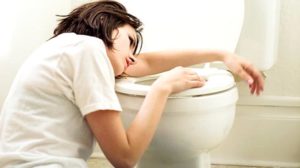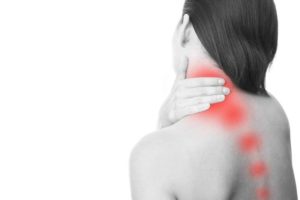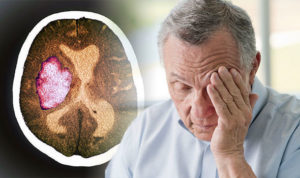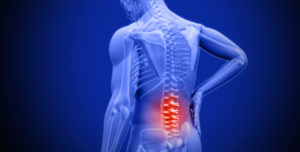What To Expect
At your first appointment, you will notice that it seems like a regular visit to your primary care doctor. It should feel like that, because the acupuncturist does need information on current and past health issues, just as your doctor does. It is important that you give all pertinent information to your acupuncturist so that you can get the best possible care and treatment for whatever brought you in. Your acupuncturist will then observe your wrist pulse and look at your tongue. After this, they will determine what your treatment plan is. If you’re okay with moving forward, you will begin your first acupuncture treatment.
How does it work?
The belief behind acupuncture is that the body’s energy, known as Qi, should be flowing through the body. When there is a blockage, it causes problems in the body. Each acupuncture point plays a significant role in signaling a specific part of the body to release Qi. By insertion of the smallest needles, acupuncturists are able to provide relief for whatever it is that brought you into the office.
What should I Wear?
It’s best to go to your acupuncture appointment in loose fitting clothes, such as yoga pants or tank tops. Acupuncturists use different points in different areas of the body to properly treat different types of problems. Sports bras are not recommended as they restrict the back. In many cases, the acupuncturist will be able to provide you with a gown or a sheet.
Safety tips
It is important to follow these safety tips before going to your acupuncture treatment.
-
Eat and drink something: If you go into your appointment with an empty stomach, you are likely to feel light headed and possibly will pass out.
-
Avoid coffee and alcohol: Coffee sends your body into flight or fight mode, which is what acupuncture is trying to stay clear from. Alcohol impairs our awareness to feeling, which a goal of acupuncture treatment is to bring more awareness to how you feel.
Vasovagal syncope
During or after your visit, you may experience something called Vasovagal syncope. Vasovagal syncope is when your body overreacts to certain triggers, such as the sight of blood, and it causes you to faint. It reduces the blood flow to your brain, which causes a drop in your blood pressure. While it is harmless, you can sustain injury when you lose consciousness. If you are about to experience Vasovagal syncope, you may notice some symptoms such as lightheadedness, nausea, a warm feeling, yawning, and blurred vision.
Acupuncture for Chronic Pain (2012)
This research was done to determine the effect of acupuncture for four chronic pain conditions: back and neck pain, chronic headache, shoulder pain, and osteoarthritis. Although a total of 17,922 patients were analyzed, only 29 individual patient data meta-analyses were conducted. The studies showed that acupuncture was superior to both no acupuncture control and sham acupuncture for each pain condition. This research showed that patients receiving acupuncture had less pain, proving that there are significant differences between true and sham acupuncture.
Response of Local Nitric Oxide Relapse to Manual Acupuncture and Electrical Heat in Humans: Effects of Reinforcement methods (2018)
In this study, acupuncture needles were inserted into the skin of 25 female and male participants for 20 minutes. All subjects were required to be healthy, nonsmokers, and without major surgery in the past 12 months. Every 5 minutes, the needles were delicately twisted to achieve the “de qi sensation” The de qi sensation is a feeling of soreness, numbness, distention, or pain. Researchers also constructed a heating pad by folding a wire within fire resistant cloth which was connected to a temperature controller. The heating pad then was placed over LU11 and tied with an elastic band around the subject’s finger. This study shows that reduction is attained by rapidly twisting or rotating the needle with force. Under reduction conditions, the nitric oxide levels decreased.
Acupuncture Treatment as Breastfeeding Support (2011)

In this study, 90 women were randomly divided into two groups. One received acupuncture treatment and the other was just being observed. At enrollment and at the end of the 3-week trial, a midwife assessed the quality of breastfeeding. During the enrollment assessment, there showed no significant differences between both groups. After the 3-week trial, the assessment showed exclusive breast feeding was significantly lower in the observation group than in the acupuncture group. By the third month of the child’s life, it showed that 35% of women in the acupuncture group compared to the 15% of the observation group were still exclusively breast feeding. This study suggests that 3 weeks of acupuncture treatment was more effective than breastfeeding alone.
A Pilot Observational Study of an Acupressure/Acupuncture Intervention in Children with Autism Spectrum Disorder (2017)

This research study was done to discover if children with autism spectrum disorder (ASD) would be able to tolerate an acupressure/acupuncture intervention. Researchers also wanted to see whether or not parents would adhere to a twice-weekly, 8-week intervention protocol. Researchers had a total of 10 children, ranging between ages 3-10, participate in this study along with their parents. Located in a private practice, the children in the study were administered a total of 16 biweekly treatment sessions by a licensed acupuncturist. At home, parents were to carry out a daily home-based acupressure intervention. Parents were asked to complete a daily diary. What were the results? The children tolerated the intervention and the parents adhered to the 16 sessions, biweekly protocol, and completing the daily diary. This research helps to prove that it is practical to use acupressure/acupuncture as an intervention for children with ASD.
Acupuncture for Chronic Fatigue (2014)

Chronic fatigue is hard to fight because usually it is associated with a chronic condition. The treatment of the condition must be successful to treat the fatigue. Chronic fatigue syndrome (CFS) is not associated with a chronic medical condition, but the only possible treatment is cognitive behavioral therapy, which has proven to produce variable results. This study used thirty cases from 2011-2013, whose medical records belonged to the current author of this study. These 30 cases all had a wide-range of chronic disorders or had been diagnosed with CFS. 16 treatments were given; the first four were to solely address fatigue, treatments 5-16 targeted both fatigue and Chinese Disharmony Patterns. The results of this study were amazing. Immediately after the first treatment, there was a 28% improvement rate in the average fatigue score. After four treatments, the average improvement rate went up to 58%. After 16 treatments, the average improvement rate skyrocketed up to 90%. Many patients even stated their fatigue went down to 0%. Acupuncture is definitely the most effective treatment and it’s comes with no side effects.
Acupuncture for Pain and Nausea in the Intensive Care Unit (2017)

In this research study, out of the 576 patients admitted into the ICU, 32.2% were eligible for acupuncture. The goal was to see if acupuncture could help relieve pain and nausea in patients in the intensive care unit. Patients were given three 20-minute acupuncture treatments, in addition to their regular care. After their first treatment, patients pain levels immediately decreased by 2.36 points. The results of this study? Most of the patients reported that they benefited from the acupuncture treatment. There also was a decrease in the morphine usage after each treatment. In the ICU, acupuncture has proven to be a feasible, safe, and acceptable form of treatment for patients experiencing pain and nausea.
Use of Dr. Tan’s Chinese Balance Acupuncture for Treatment of Chronic Neck/Shoulder Pain (2016)

A common musculoskeletal problem such as neck-shoulder pain is often chronic or recurrent. The mechanism of neck-shoulder pain is often unclear. In this study, seven patients who have had chronic neck-shoulder pain from various time periods were treated with 45-minute sessions of Chinese Balance Acupuncture. After three sessions, the patients were reporting that their pain had reduced in intensity or it had dissipated completely. Researchers had patients come back for a 3-month follow up where they assessed their pain intensity, quality of life, and pain duration. This research concluded that there was effectiveness in Dr. Tan’s Chinese Balance Acupuncture for treatment of chronic neck-shoulder pain.
A Meta-Analysis of Acupuncture Use in the Treatment of Cognitive Impairment After Stroke (2014)

In this study, researchers wanted to see the efficiency of acupuncture on cognitive function after a stroke. This research was done by using randomized controlled trials comparing acupuncture with no acupuncture, in addition to medicine or rehabilitation were identified from databases. There were 21 trials completed with a total of 1,421 patients who met criteria. They were following 4 and 8 weeks of intervention with acupuncture. The conclusion of this research study suggests that acupuncture does have positive effects on cognitive function after a stroke. While this research is helpful, we still need additional research to further see the potential benefits of this approach.
Efficacy of Acupuncture on the Quality of Life of Patients with Low Back Pain (2015)

In this research study, researchers wanted to evaluate the effectiveness of acupuncture on the quality of life and long-term pain relief with low back pain. One acupuncturist treated a total of 136 patients, aged 20-93, 1-2 times a week for 5 or 10 sessions. Before treatment and after the 5th and 10th sessions, the patients pain severity and the impact of pain on the patient’s daily life were measured using a Brief Pain Inventory short form. About 90% of patients were using other treatments at the beginning of acupuncture treatment. That number significantly dropped down to 7.4% after 10 acupuncture sessions. 6 months after discharge, only 22.6% were still using other forms of therapy. Acupuncture treatment helped positively affect general activity, mood, walking ability, normal work, sleep, and relations with other people. The conclusion to this study is that acupuncture greatly improved the quality of life and pain management in patients and this treatment lasted 6 months after completion of treatment.
Acupuncture for Recovery from Pediatric Sport-Related Concussion (2016)
In sport’s activities, concussions are a major problem. The number of children participating in sports activities is continually growing, along with the number of emergency visits each year due to a sports related injuries, totaling around 500,000. This research study is to see if the use of acupuncture in the management of sports related post concussive sports symptoms is feasible. There were 3 patients used in this study, all who were pediatric patients. A chart review was performed, along with a post concussive symptoms questionnaire, and the Brief Pain Inventory were included in the review. In all three patients, symptomatic reduction was satisfactory following their acupuncture treatment. Although it was used alongside conventional medicine, acupuncture appears to reduce the post concussive symptoms in patients.
Acupuncture Treatment for Carpal Tunnel Syndrome (2010)
In this research study, the researchers goal was to demonstrate the incorporation of various acupuncture techniques in the treatment of carpal tunnel syndrome. This study used one patient; a 62-year-old woman who had been reporting pain and weakness while gripping in both hands. Carpel tunnel is the entrapment of the median nerve within the carpal tunnel. The acupuncturist used acupuncture needles using the wrist barrier points PC 4, SI 6, LU 6, LI 9, and LI 4. After the first session, the patient reported her pain had decreased by 70% and continued to stay at 70% 6 months after treatment. In conclusion, acupuncture quickly opened the energy blockages and released myofascial spasms, proving to have significantly help the woman with her carpal tunnel syndrome.



